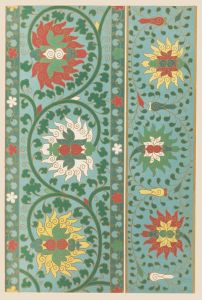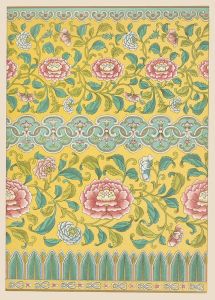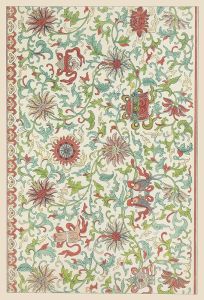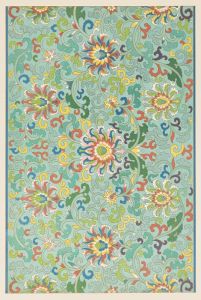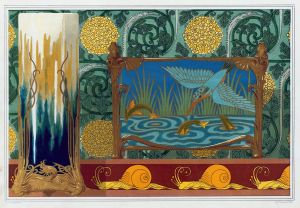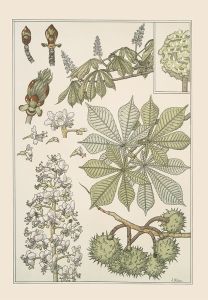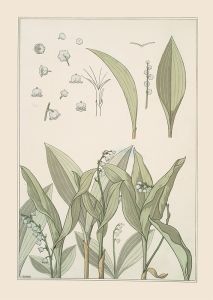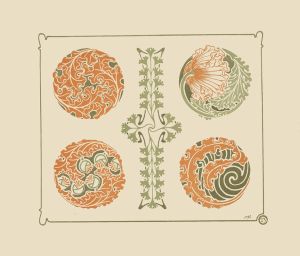
Colombes et lis, étoffe imprimée.
A hand-painted replica of Maurice Pillard Verneuil’s masterpiece Colombes et lis, étoffe imprimée., meticulously crafted by professional artists to capture the true essence of the original. Each piece is created with museum-quality canvas and rare mineral pigments, carefully painted by experienced artists with delicate brushstrokes and rich, layered colors to perfectly recreate the texture of the original artwork. Unlike machine-printed reproductions, this hand-painted version brings the painting to life, infused with the artist’s emotions and skill in every stroke. Whether for personal collection or home decoration, it instantly elevates the artistic atmosphere of any space.
Maurice Pillard Verneuil was a prominent French artist and designer known for his contributions to the Art Nouveau movement. Born in 1869, Verneuil was renowned for his innovative use of color and form, particularly in the realm of decorative arts. His work often featured natural motifs, which were a hallmark of the Art Nouveau style, characterized by its emphasis on organic forms and intricate patterns.
"Colombes et lis, étoffe imprimée" is a notable example of Verneuil's work in textile design. The title translates to "Doves and Lilies, Printed Fabric," indicating the primary motifs used in the design. This piece exemplifies Verneuil's skill in integrating natural elements into decorative art, a common theme throughout his career. The use of doves and lilies not only reflects the Art Nouveau fascination with nature but also showcases Verneuil's ability to harmonize different elements into a cohesive and aesthetically pleasing design.
Verneuil's designs were influential in the late 19th and early 20th centuries, a period when the Art Nouveau movement was at its peak. This movement sought to break away from the historical styles that dominated the 19th century, instead embracing modernity and the beauty of the natural world. Verneuil, along with his contemporaries, played a significant role in popularizing this style across various forms of art, including architecture, interior design, and graphic arts.
In "Colombes et lis, étoffe imprimée," Verneuil's choice of doves and lilies can be seen as symbolic. Doves often represent peace and purity, while lilies are associated with beauty and renewal. These symbols would have resonated with the Art Nouveau ethos, which often sought to convey deeper meanings through the use of natural imagery. The design likely features flowing lines and intricate patterns, typical of Verneuil's style, which would have been printed onto fabric for use in interior decoration or fashion.
Verneuil's work in textile design was part of a broader trend during the Art Nouveau period, where artists sought to blur the lines between fine art and applied arts. By creating beautiful, functional objects, they aimed to bring art into everyday life. Verneuil's textiles would have been used in various settings, from private homes to public spaces, contributing to the overall aesthetic environment of the time.
Throughout his career, Verneuil collaborated with other artists and designers, contributing to a wide range of projects. His work was not limited to textiles; he also produced posters, illustrations, and ceramics, among other forms. This versatility helped to cement his reputation as a leading figure in the Art Nouveau movement.
Today, Maurice Pillard Verneuil's work is celebrated for its artistic and historical significance. "Colombes et lis, étoffe imprimée" remains an important example of his contribution to textile design and the broader Art Nouveau movement. His ability to capture the essence of nature and translate it into decorative art continues to be admired by art historians and enthusiasts alike.





